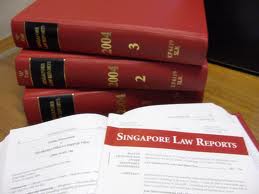Statutory Laws and Delinquents
Since the British administration in this subcontinent a number of laws have been passed to control the antisocial and illegal activities of juveniles, but serious enough in none of these excepting the Children Act, 1974,[4] any punitive measures are recommended for the correction of the juveniles. For a better comprehension of the fact, we may discuss the objects and contents of these Acts.
The Penal Code, 1860 (Act No. XLV of 1860)
Provisions relating to child, juvenile delinquency have been stated in the Sections 82 and 83 of the Penal Code, 1860.[5] Under the Section 82, nothing is an offence, which is done by a child under nine years of age. The policy of this section is that he who is under seven years of age is quite unable to commit a crime. The child, whose age is not more than nine years of age, is innocent in the eyes of law. There is no crime in any work of him. If one who is under nine years of age commits crimes this are crimes in the eyes of law, yet he is not regarded as a delinquent for that misdoing. He, who has not attained the efficiency of understanding right or wrong due to under age, does anything without sense. Work down without sense cannot be regarded as crime. It is seen frequently that a child of six and half years of age attains the precocity of a matured one. Even in these circumstances, a precocious child under nine years of age will not be regarded as a delinquent.
If any charge is brought against any one and if it is seen that he is a child under seven-year of age then that change will not be effective to him as per law. In this regard, it is needless to ascertain the depth of knowledge. Under the Section 83, nothing is an offence which is done by a child above seven years of age and under twelve years of age, who has not attained sufficient maturity of understanding to judge the nature and consequences of his conduct on the occasion. He is capable of doing offence when his age is in between seven and twelve years. He is a matured one when his age is above seven and under twelve years. He is conscious of the nature and reaction of the work he does. If someone wants his security due to immaturity of his knowledge on behalf of him then he will have to prove his innocence by giving witness. The nature and reaction of work will prove which is normal.
The Bengal Jail Code, 1894 (Bengal Act No. IX of 1894)
Such Acts and Regulations regulate the establishment and management of jails, the confinement and treatment of juvenile delinquency therein and the maintenance of discipline amongst them. As it is mention that the Reformatory School Act, 1897; the Whipping Act, 1909; the Bengal Children’s Act, 1928; and the Bengal Borstal Schools Act, 1928,[6] were as amended by the Jail Code, 1894.[7] The Civil Procedure Code, 1908; the Criminal Procedure Code, 1898;[8] and the Penal Code, 1860,[9] which relate to the confinement of prisoners. The execution of sentences, appeals, lunatics and the like, must also be complied in connection with the prison administration. The Central Jails, District Jails, Subsidiary Jails and Special Jails are the classes of jails established in the several districts of Bangladesh under Section 60 of the Benal Jail Code, 1894. The under mention jails at Dhaka, Rajshahi, Jessore and Comilla have been declared by Government to be first class central jails. These central jails are likewise district jails and therefore receive prisoners of all classes.
Here in refer to Rule of this Code that a prisoner up to the age of 21 is considered a juvenile or adolescent. under Section 27 of the Bengal Jail Code, 1894, male prisoners under the age of 21 years shall be kept altogether separate from other prisoners, and of the former, those who have not arrived at puberty shall be separated from others. This applies both to convicted prisoners and to prisoners are detained, means must be provided for separating those four classes. Arrangements must also be made to separate adolescents guilty of grave crime from other adolescents. Female adolescents may be kept in the female ward allotted to ‘A’ class prisoner, but separation from adults should be arranged. Juvenile prisons belonging to calls prisoner, but separation from adults should be arranged. Juvenile prisons belonging to class ‘B’ must be kept apart from other juvenile prisoners. Another Rules as follows, ‘youthful offender’ means any boy who has been convicted of any offence punishable with transportation or imprisonment and who has been convicted of any offence punishable with transportation or imprisonment and who, at the time of such conviction, was under the age of fifteen years. In the confinement of youthful offenders in jails, it is in many ways objectionable. Superintendents should bring to notice that under Section 10 of the Reformatory School Act, 1897. whenever a male prisoner under 15 years of age is admitted, his confinement in a reformatory has to be ordered. Otherwise they may be aware the Magistrate of the District in which the prisoner was convicted and previously decided that the prisoner shall not be sent to a ReformatorySchool.[10]
The Criminal Procedure Code (Act No. V of 1898)
Bangladesh inherited a rudimentary form of juvenile justice from the colonial laws, namely the Come of Criminal Procedure, 1898,[11] which provided for trial of children in juvenile courts. The Code of Criminal Procedure enacted in 1884, and later modified 1898, contained special Section 29(B), 399 and 562, which referred dealing with children and juvenile delinquency up to age of 21 years. The provisions of Section 29(B) and 399 of the Criminal Procedure Code, 1898, shall cease by Section 78(3) of the Children Act, 1974, to apply to any area in which this Act shall be brought into force. It is stated in Section 29(B) of the Criminal Procedure Code, 1898, in jurisdiction in the case of juveniles. This Section said that any offence, other than one punishable with death or imprisonment for life, committed by any person who at the date when he appears or is brought before the court is under the age of fifteen years, may be tried by a District Magistrate or the Chief Metropolitan Magistrate or by any Magistrate specially empowered by the Government. To exercise the power conferred by or under any law providing for the custody, trial or punishment of youthful offender, by any Magistrate empowered by or under such law to exercise all or any of the powers conferred thereby. Section 399 of the Penal Code, 1898 provided that when any person under the age of 15 years was sentenced by any Criminal Court for imprisonment the Court may direct that the persons should not imprisoned in criminal jail. Rather he should referred to any reformatory institute established by the Government having suitable discipline and training in some useful industry. Section 562(1) of the Criminal Procedure Code, 1898,[12] also made specific provisions for persons under 21 years of age for release; on probation of good conduct, under certain conditions instead of sentencing to imprisonment. Moreover, it considered the physical and mental conditions of the child and the circumstances under which the offence was committed. This Section repealed by the Probation of Offenders Ordinance, 1960.[13]
The BorstalSchool Act, 1928 (Act No. I of 1928)
A result of the wide-ranging approvals done by the Indian Jail Committee (1919-1920) was the approval of the Borstal Schools Act, 1928.[14] Conditions have been summed up to the criminal law of the country as substitute for confinement, especially for the reformation and rehabilitation of the youthful offenders ascertained in the Act as “adolescents” in spite of its institutionalizing within the Borstal School and having official permission. The Act also established the rules and regulations laying down and controlling Borstal Schools. It ought to be stated that this Act has endured a little change since the enactment of this law in 1928.
Juvenile delinquents are reformed in BorstalSchool through general education and different vocational training along with psychological treatment simultaneously. Their mentality and viewpoint change in consequence of it and they possess a high moral character with support them in reformation and rehabilitation. Therefore, the foundations of this type of institutions were set up for reformation and rehabilitation of the juvenile delinquents.
BorstalSchool first emerged in England for reformation of the juvenile delinquents. Afterwards, it spread in other developed and developing countries. The name of the Borstal School Act, 1928, was the “Bengal Borstal Schools Act, 1928.” Next, the word ‘Bengal’ was rejected from the title of that Act. Thought the BorstalSchool was set up at Murapara near Dhaka in 1949, no initiative was taken to transfer reformative juvenile delinquents there due to the negligence of the authority. As a result, there is no BorstalSchool after liberation of Bangladesh in 1971. Though there is no BorstalSchool in Bangladesh, the Borstal School Act, 1928,[15] has yet been repealed.
This Act is empowered to make provision for the establishment and regulation of Borstal Schools for the detention and training of adolescent offenders. It is expedient to make provision for the establishment of regulation of Borstal Schools for the detention and training of adolescent offenders. Whereas the previous sanction of the Government General has been obtained under Sub-Section (3) of Section 80(a) of the Government of India Act it extends to the whole of Bangladesh.
It is hereby stated in the definition of “adolescent offender” of the Borstal School Act, 1928. ‘Adolescent offender’ means, any person who has been convicted of any offence punishable with imprisonment or who having been ordered to give security under Sections 106 and 118 of the Code of Criminal Procedure Code, 1898, has failed to do so or who, having been dealt with under the provisions of Section 562 of the Criminal Procedure, 1898, has failed to enter into a bond or find securities or who, when the bond has been cancelled under Section 126(A) of that Code, has failed to give fresh security and who at the time of such conviction or failure to give security:
(i) In any area where the Children Act, 1922, is in force, is not less than sixteen yeas not more than twenty one years of age, or
(ii) In any other areas are not less than fifteen years and not more than twenty-one years of age.
The age of the offender and with the nature of the offence are simultaneously used to define an adolescent offender, who must be not less than fifteen years of age and not more than twenty-one years of age. The offence itself is, of course, a punishable one by imprisonment. The punishable offence itself also includes one who has failed to furnish security, or has unable to enter into a bond or accused of with another minor offence.[16]
The Borstal School Acts, 1928,[17] provides that young persons (15-21 years of age group) convicted of certain crimes can be sent to a BorstalSchool for disciplinary measures and vocational training. This Borstal School Act, 1928, have provisions to release the offender from institutional care (BorstalSchool, CertifiedSchool and Approved Home) to live in the community under licence, on parole.
As a supplementary legislation during the British reign, the Bengal Borstal Act, 1928, made provision for the committing of ‘adolescent offenders’ in Borstal Schools to be established under not more than three years. While recommending such a placement the court had to consider the character, state of health and mental condition of the offenders who would profit by such detention. This Act gave power to the Inspector General of Prisons to transfer adolescent offenders detained in Jail or ReformatorySchool to the BorstalSchool. The enactment of this legislation made an important beginning in the process of instituting separate procedures for the trial and rehabilitative dispositions of juvenile offenders. Their intentions could hardly mate realise either due to the persistent punitive orientation of the trying Magistrates or complete absence of suitable institutions like Reformatory or Industrial Schools in areas now constituting Bangladesh.
The Vagrancy Act, 1943 (Act No. III of 1943)
The Act was conceived against the grim background of the famine in Benal in 1943. It was conceived against the grim background of the famine in Bengal in 1943. It was passed in October that year when the famine reached its climax and thousands of persons had been leaving their village homes for towns and cities. The reasons for passing such an Act may be attributed to the result of conflict of interest between rural and urban areas. The public policy towards the beggars as a disadvantaged group can hardly be traced in Bangladesh until 1943. There were some measures in the Calcutta Police Act of 1866 but a definite policy measure was not taken until the enactment of the Bengal Vagrancy Act, 1943. After the partition of India in 1947, the Act was adopted by the East Bengal (now Bangladesh) Legislative Assembly with little modification. In 1951 the metropolitan areas of Dhaka and Chittagong and in 1952, Narayangonj and Chandpur towns came under this Act. During the 1960’s, it became effective in certain other urban areas.
In Bangladesh, many children are found who are vagrant, according to the definition of this law, ‘child’ means a person under 14 years of age. This Act provided for the detention and institutional placement of beggars. The Act defines, ‘vagrant’ as a person who is found asking for alms in any public place, or wandering about or remaining in any public place in such a condition or manner as makes it likely that such a person exists by asking alms but does not include a person collecting money or asking for food or gifts for a prescribed purpose. In this Act provided for the vagrancy and training of children below 14 years of age who (i) lived on begging; or (ii) where under unfit guardianship; or (iii) where under the care of parents of drinking or criminal habits; or (iv) frequently visited prostitutes; or (v) where destitute; or (vi) where subject to bad treatment.
Police officer may need an apparent vagrant to appear before a special Magistrate or Metropolitan Magistrate who will make a summary inquiry into his character and circumstances. If he is contented that the person is vagrancy, he may pass the requisite orders for his confinement in a Vagrant Home. The Magistrate may drive out such a person who is not a resident of the area where the condition of the Act is in operation; the Magistrate may expel him. Then the controller of vagrancy prohibits him, not to return without written permission. A beggar may be arrested by the police without a warrant and sentenced by a Magistrate to rigorous imprisonment if he violates such an order.
The Act supplied for the confinement of beggars in a Vagrant Home, which may include provisions for the teaching of agricultural, industrial or other pursuits and for the general education of the inmates.
According to this law, the man who begs openly is called a vagrant. Many children in Bangladesh are vagrants in the definition of this law. An individual under fourteen years of age is regarded as a child. A police may appear before the Magistrate with him and the Magistrate will consider all his particulars and age. He may send him to Vagrant Home if necessary.
The Children Act, 1974 (Act No. XXXIX to 1974)
The concept that the growth of the children depend to a great extent upon the society as well as the state has given rise to the enactment of various laws relating to children. The children should be given a proper training and good habit of discipline life from their childhood. They shold be focused with the light of goodness and virtues and the social values of life. They should be specially treated with and lead a sort of quarantine life, so that they can not be affected by the germ of social cancer, that can easily kill an adult of the future.
Bangladesh Parliament passed the Children Act, 1974,[18] which repealed and replaced the Children Act, 1922,[19] and the Reformatory Schools Act, 1897. In fact the present legislation is a model on the basis of the Children Act, 1922. The definitions as given in the Madras Act, 1920 (in India) were also incorporated in the Bengal Children Act, 1922, with significant changes. Certified Schools were described as IndustrialSchool in the later Act.
The preamble states that it is an Act to consolidate and amend the law relating to custody, protection and treatment of children and trial and punishment of youthful offenders. This has come into force on 1st November, 1976, vied notification No. 315-L/76, dated 11th September, 1976, for Dhaka district only and for other district it has come into force on 1st June, 1980, vied S.R.O. No. 127-L/80, dated 16th May, 1980.
A review of the working of the existing the Children Act, 1974,[20] would indicate that much greater attention is required to be given to children who may be found in situations of social maladjustment, delinquency or neglect. The justice system as available for adults is not considered suitable for being applied to juveniles. It is also necessary that a Juvenile Court system should make adequate provision for dealing with all aspects in the changing social, cultural and economic situation in the country. There is also need for larger involvement of informal systems and community based welfare agencies in the care, protection, treatment, development and rehabilitation of such juveniles.
The children Act, 1974, defines a child as a person under the age of 16 years. In such case if a person is punished by a court to detain under custody he should then sent to a certified institute of approved home or to relative or other fit person where he stay until attained the age of 16 years during the period of his detention.
Status of offences of children, like disobedience to parents, teacher and supervisor, and running away from home or school and association with criminals, are also call with by this Act, This Act has also provided for the measures for taking care and ensuring welfare of the abandoned, destitute and beggar children whom may turn as criminals in course of time.
The Act is commonly about the custody, trial and punishment of children as well as the trial and punishment of youthful offenders. The common aspects of the Act are discussed under the following sub-headings.
(i) Application the categories of children to whom the Act is applied and the method of dealing with them;
(ii) The trial of children (the juvenile court);
(iii) Type of treatment;
(iv) Measures for implementation: Personnel and relatives responsibility; and
(v) Safety of the child and penalties against the child for the commission of offences.
The Children Act, 1974, which is now in force in Bangladesh, provides for systems of trial, custody, protection, treatment and reformation of the juvenile offenders. As is required by this act a Juvenile Court, a Remand Home and a Correctional Institute (National Institute for Correctional Services, Dhaka and Institute for Juvenile Correctional Services, Jessore) was set up at Tongi near DhakaCity in 1978 and Pulerhat near JessoreCity in 1995. The Juvenile Court has now jurisdiction throughout the whole country. Each of the Correctional Institute, One full-time First Class Magistrate remains for the court and a Probation Officer for Correctional Institute.
The Children Act, 1974, provides for the appointment of probation officers to allow individualized treatment of delinquents and are required that courts should consider the interests of the child when arriving at decisions.
This is an Act aiming at consolidation and amending laws relating to the custody, protection and treatment of Children Juvenile and trial and punishment of the youthful offenders under the age of 16. While promulgating the Children Act, 1974, the Government have taken into consideration the relevant factors influencing the juvenile criminality and thereby endeavored to protect the welfare of the juvenile and the juvenile offenders.
Part V of the said Act has dealt adequate on measures for the care and protection of destitute and neglected children. But part VI of the Act has the necessary provision for punishing adult persons custodians of the juveniles for committing special offences in respect of Children and Juvenile. The Children Act, 1974, has very elaborately detailed characteristic features which are different from that of adults in matters of (a) Investigation, (b) Adjudication, and (c) Treatment of Juvenile Offenders. As per provisions of the Act necessary arrangement has been made for holding separate trial of the courts of the country empowered in this behalf. If a child is charged together with an adult for any offence, the case shall be separated and the case of the child shall then be transferred to a Juvenile Court for trial. The Act has also extensively detailed the various methods and procedures of conducting investigation, trial and disposal of juvenile cases by the specified courts.
An individual evidently under sixteen years of age and arrested for an alleged crime is considered as a possible youthful offender.[21] Offender like this may be permitted to be set free on bail except when there is reasonable information of him possible exposure to peril and talking with recognized criminals. The child is to be taken in a remand house or an abode of security both before and throughout the trial except when he is not freed on bail. While the court punishes the youthful offender in relation to the gravity of the offence, there are restrictions on the mode of punishment. In general, children cannot be sentenced to death or imprisonment or allowed to associate with adult offenders. However, children committing offences of a grievous nature or having a depraved character may be imprisoned or detained of the court feels that other methods of dealing with them are inadequate.
No Juvenile under the present legal system of the country is either convicted or imprisoned. The Children Act, 1974, has clearly mentioned that the words, “conviction” and “Sentence” shall not be used in relation to the children. Once a juvenile is found to have committed any offence he is to be committed to a Correctional Institute or Certified Institute or Approved Home and not in an adult prison.
If the child is accused of a crime liable to be punished by death, transportation existence (viz. confinement for life) or confinement, he may be shifted to an authorized society for detention. This type of detention will not, of curse, be below two and not above ten years.
Again youthful offenders may be accused after warning, or set free to the attention of parents; guardian, suitable persons or relations who have to perform a bond to be answerable for the refined treatment of the youthful offender for any time not above three years. The child may also be taken under the inspection at a probation officer. If complaint goes against him that he is not of good behaviour, he may be detained in an authorized society for the valid period at his probation.
The Children Rules, 1976 (No S.R.O. 103-L76)
The Children Rules, 1976, was introduced under authority of Section 77 of the Children Act, 1974.[22] The Children Rules, 1976 provides that the hearing of all cases and proceedings shall be conducted in as simple manner as possible without observing any formalities. Care shall be taken to ensure that the child against whom the case or proceeding has been instituted feels homelike atmosphere during the hearing. There is definite indication of sitting of session and adjournment of it is stated in the rules that a court shall hold its sitting at least once in a week or as often as may be necessary for the purpose of expeditious disposal of all cases and proceedings instituted under the Act and may adjourn the hearing of a case or proceeding from time to time as may be necessary. It is also stated in the rules that a youthful offender or child may be permitted by licence to live with any trustworthy to respectable person named in the licence on condition: (a) he faithfully obey the instructions of the person to whom he is licehce to live; (b) he shall keep himself away from bad associations and abstain from taking intoxicants; and (c) he shall mot leave the place of his residence or area without the prior permission of the person under whose care he has been placed.
The power and responsibilities of a Probation Officer have been briefly stated in the Section 31of the Children Act, 1974,[23] but it is elaborately stated in the Children Rules, 1976.
Conclusion:
The formal law of Bangladesh attempts to protect its citizens against all forms of discrimination. Children are not the exception but the rule. This is evident not only from the juvenile justice laws but also from the Constitution of Bangladesh which ensures that children and others shall be entitled to protection against all forms of discrimination. The Constitution also guarantees everyone the right to life, liberty and freedom from arbitrary detention. While the right to bail and a fair and speedy trial is embodied in the Constitution, it also gives every citizen the right to freedom from torture and other cruel, degrading and inhuman treatment.
4. The Children Act, 1974 (Act No. XXXIX of 1974).
5. The Penal Code, 1860 (Act No. XLV of 1860), Secs. 82 and 83.
6. The Bengal Borstal School Act, 1928 (Bengal Act No. 1 of 1928).
7. The Jail Code, 1894 (Act No. IX of 1894).
8. The Criminal Procedure Code, 1898 (Act No. V of 1898).
9. The Penal Code, 1860 (Act No. XL V of 1860).
10. The Bengal Jail Code, 1894 (Act No. IX of 1894) Rule 963 (2)
11. The Criminal Procedure Code, 1898 (Act No. V of 1898).
12. The Criminal Procedure Code, 1898 (Act No. V of 1898), Sec. 562 (2).
13. The Probation of offenders Ordinance Act, 1960 (Act No. XLV of 1960).
14. The Borstal School Act, 1928 (Act No. I of 1928)
15. The Borstal School Act, 1928 (Act No. I of 1928)
16. The Criminal Procedure Code, 1898, (Act No. V of 1898), Secs, 106, 118, 120 (A) and 562.
17. The Borstal School Act, 1928 (Act No. I of 1928)
18. The Children Act, 1974 (Act No. XXXIX of 1974).
19. The Bengal Children Act, 1922 (Bengal Act No. II of 1922).
20. The Children Act, 1974 (Act No. XXXIX of 1974).
21. Ibid., Sec. 2 (f)
22. The Children Act, 1974, (Act No. XXXIX of 1974).
















